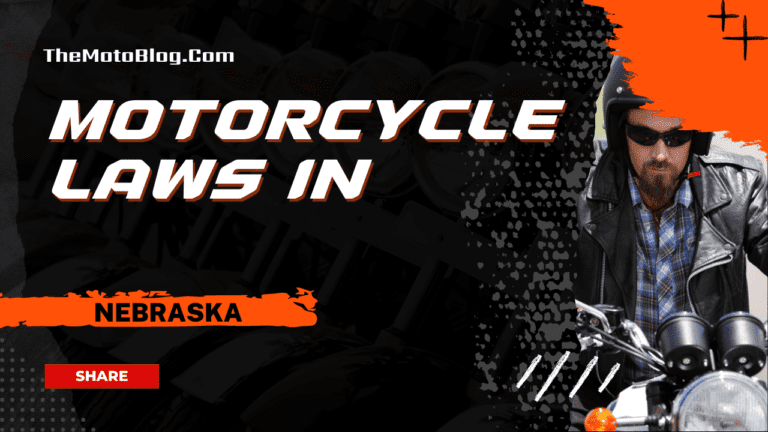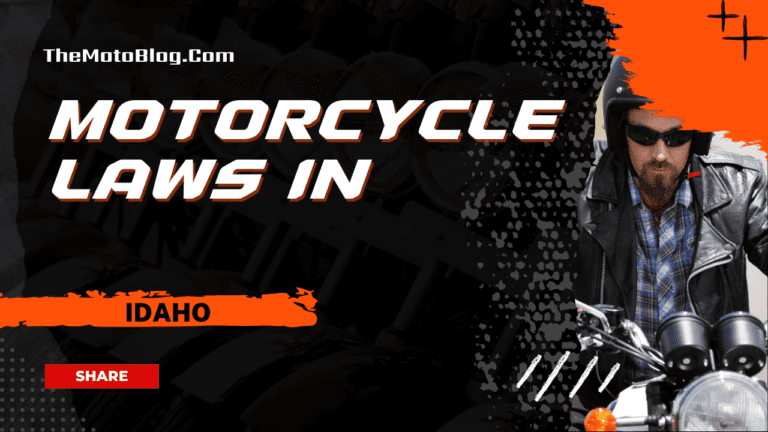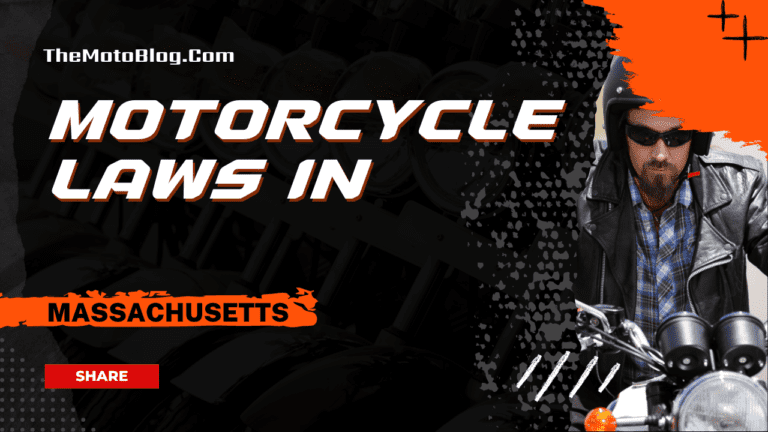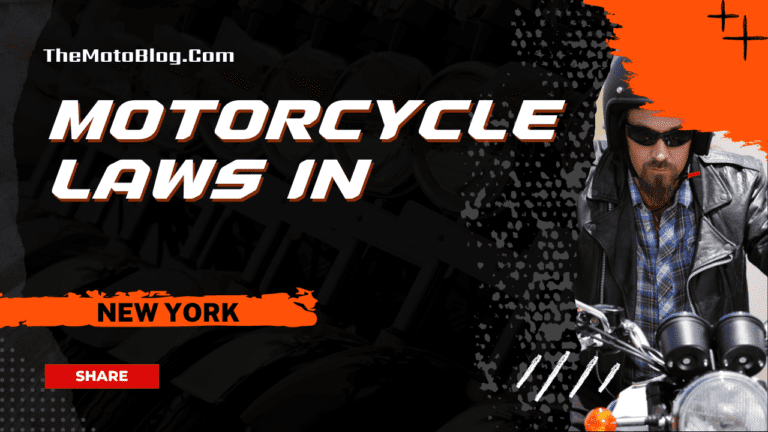Motorcycle Laws in Hawaii: Your Comprehensive Guide to Safe Riding
Navigating the beautiful island paradise of Hawaii on a motorcycle can be an exhilarating experience. However, it’s important to remember that with this freedom comes certain responsibilities. Hawaii has specific laws and regulations in place for motorcycle riders, designed to ensure everyone’s safety while enjoying the ride on these scenic roads.
Motorcycle laws in Hawaii are quite comprehensive, addressing everything from helmet requirements to lane splitting rules. For instance, Hawaii mandates all motorcycle riders and passengers under 18 must wear helmets, a law aimed at reducing traumatic brain injuries which can occur during accidents.
Moreover, when it comes to lane splitting – a practice where motorcyclists drive between two lanes of stopped or slow-moving cars – is currently illegal in Hawaii. This is because it’s deemed too risky by local authorities who believe it increases the chances of collisions due to the limited space and potential for sudden car movements. So if you’re planning a bike ride around our glorious islands, make sure you’re up-to-date with these rules and more!
Key Takeaways
- Hawaii has specific laws for motorcycle riders, including helmet requirements, lane splitting rules, and modification restrictions.
- Helmets are mandatory for all riders under 18; eye protection is required unless the bike has a windscreen.
- Lane splitting, driving between two lanes of slow-moving cars, is illegal in Hawaii.
- To ride a motorcycle in Hawaii, you need a Class 2 license; individuals under 18 must pass a driver’s ed course and hold an instruction permit for 90 days.
- Insurance is mandatory for all motorcyclists in Hawaii and should cover bodily injury and property damage.
- Regarding passengers and cargo, motorcycles should have designated seating for passengers; helmets for passengers over 18 are not required but mandatory for those under 18.
- Carrying a load on a motorcycle that affects one’s control over it is considered illegal in Hawaii.
- DUI/DWI laws for motorcyclists involve fines, license suspension, and possible jail time, increasing in severity with each subsequent offense.
- Riding without mandatory motorcycle insurance can lead to hefty fines or license suspension.
- Hawaii’s motorcycle laws vary considerably compared to other states, for instance: Helmets are mandatory for riders under 18 in Hawaii, while they are required for all ages in California and New York. Lane splitting is prohibited in Hawaii but legal in California.
- The article emphasizes that understanding and following Hawaii’s motorcycle laws is crucial for rider and public safety.
Motorcycle laws in Hawaii stipulate that all riders under the age of 18 must wear a helmet. Further, all riders, regardless of age, must wear protective eyewear unless their motorcycle is equipped with a windshield. Since Hawaii is an island state and does not share land borders with other states, we can compare its laws to the ones on the U.S. mainland’s West Coast. For instance, motorcycle laws in California require all motorcyclists to wear a helmet, regardless of age. Moving north, motorcycle laws in Oregon also mandate helmets for all riders, as do the motorcycle laws in Washington. These comparisons show a trend towards more comprehensive helmet laws on the mainland, especially the West Coast, compared to Hawaii’s age-specific requirement. Understanding these differences helps motorcyclists navigate the specific legal landscape of Hawaii and its closest continental neighbors, ensuring compliance and safety.
Understanding Hawaii’s Motorcycle Laws
When it comes to motorcycle laws, Hawaii definitely has its unique set. I’ve spent some time researching and understanding these regulations to help folks like you navigate them with ease.
First off, Hawaii requires all motorcyclists and their passengers to wear helmets approved by the Department of Transportation (DOT). It’s a law that aims for your safety on the road, so don’t take it lightly.
Next up is the motorcycle licensing requirement in Hawaii. You can’t just hop on a bike and go – you’ve got to have a Class 2 license specifically for motorcycles or scooters. If you’re under 18, there are additional requirements, including passing a state-approved driver’s ed course and holding an instruction permit for 90 days.
For those who love modifying their rides, be aware that handlebars can’t be more than 15 inches above the seat, according to Hawaii’s laws. Additionally, keep in mind that eye protection is required unless your bike has a windscreen.
Here’s how these laws break down:
| Requirement | Details |
|---|---|
| Helmets | Mandatory for all riders |
| License | Class 2 required |
| Age Requirement | Under-18 must pass driver’s ed course & hold instruction permit for 90 days |
| Handlebars Height | Not more than 15 inches above the seat |
| Eye Protection | Required if no windscreen |
Another important aspect of Hawaiian motorcycle laws centers around lane splitting – riding between two lanes of traffic moving in the same direction. Contrary to popular belief, lane splitting isn’t permitted in Hawaii.
Lastly, remember that insurance is mandatory when operating any motor vehicle in Hawaii – motorcycles included! Make sure you’re covered before hitting the open road.
The Basics: Helmet and Equipment Laws
Firstly, Hawaii has a partial helmet law. This means that helmets are mandatory for riders under 18 years of age. If you’re above 18, the choice is yours. However, I’ll strongly emphasize that wearing a helmet can significantly reduce the risk of severe injuries or even death in case of an accident.
| Age | Helmet Required |
|---|---|
| Under 18 | Yes |
| 18 and Over | No |
Moving on to other necessary equipment, eye protection is not legally required unless your bike lacks a windscreen. But again, it’s always better to prioritize safety over convenience.
The use of headphones or earbuds while riding isn’t permissible unless they’re built into your helmet or used for communication purposes only.
Motorcycles must have at least one rearview mirror installed on either the right or left side.
There’s no explicit law about turn signals but motorcycles manufactured after December 31st,1972 must be equipped with them as per federal regulations.
Motorcycle Licensing in Hawaii
If you’re yearning to feel the wind on your face as you cruise around the beautiful islands of Hawaii on a motorcycle, there’s some groundwork that needs to be done first. Specifically, you’ll need a motorcycle license. Let’s dive into the specifics of how one can obtain this crucial document.
Hawaii doesn’t mess around when it comes to safety; hence they have strict requirements for prospective motorcyclists. First off, you’ve got to be at least 18 years old before thinking about getting a license in this Pacific paradise. That’s right, no teenagers tearing around these quiet streets!
Next up is passing the written test which covers basic rules and regulations related to motorcycling. But remember, clearing the written exam alone won’t cut it! You’ll also need to demonstrate your riding proficiency through an on-cycle skills test.
Here’s a brief rundown of those must-know facts:
| Requirement | Details |
|---|---|
| Minimum Age | 18 years |
| Written Test | Mandatory |
| On-Cycle Skills Test | Mandatory |
If tests aren’t exactly your thing or if you’re looking for guidance before taking them head-on, there’s good news for you too. Hawaii offers state-approved motorcycle training courses that could help make the process smoother.
Once everything is sorted out at DMV office, you’re officially licensed – ready and legally set for those sun-soaked rides along Hawaii’s breathtaking coastline.
Lane Splitting and Sharing: What’s Allowed?
Lane splitting, where a motorcyclist rides between two lanes of stopped or slower moving traffic, is currently not legal in Hawaii. If you’re thinking about weaving through stalled cars on H1 during rush hour, think again. You’ll be risking not just a hefty fine but also your safety.
It’s important to note that this isn’t unique to Hawaii. In fact, California is the only state where lane splitting is explicitly allowed by law.
As for lane sharing, things are a bit different. This refers to two motorcycles riding side-by-side within the same traffic lane. Now here’s some good news – under Hawaiian law, this practice is permitted. But remember to share responsibly! Riding too closely can still land you with a reckless driving charge.
Here are some key points to keep in mind:
- No Lane Splitting: Don’t ride between lanes of slow or stopped traffic.
- Yes To Lane Sharing: Two bikes can travel together within one lane.
- Safety First: Regardless of what’s permitted, always prioritize safe riding practices.
Passenger and Cargo Restrictions in Hawaii
When you’re cruising on your bike in the Aloha State, it’s crucial to understand all about passenger and cargo restrictions. Let’s break it down.
Firstly, if you’re planning to carry a passenger on your motorcycle in Hawaii, there are specific laws. The motorcycle must be designed to carry more than one person. It means having both a permanent regular seat for the rider as well as a separate rear seat for the passenger or sidecar style seating area.
Helmets are not required by Hawaiian law for passengers over 18 years of age, but safety should always be paramount when riding with an extra person. If your passenger is under 18 years old, they are legally obliged to wear protective headgear.
Now let’s talk about cargo. Cargo limits are often specified by the motorcycle manufacturer itself in the vehicle manual – I’d suggest sticking strictly to these guidelines.
Here’s a quick rundown of some key points:
- Motorcycles must have designated seating for passengers
- Helmets aren’t required for passengers over 18 but mandatory for those under
- Always follow manufacturer guidelines regarding weight and placement of cargo
Carrying any load that prevents you from keeping both hands on the handlebars or interferes with your control of the motorcycle is illegal in Hawaii. It’s also unlawful to transport anything between yourself and the handlebars.
In terms of specifics,
| Restriction | Details |
|---|---|
| Passenger seating | Must have designated spot |
| Helmet use (passengers) | Not needed if over 18 |
| Cargo limitations | Follow manufacturer’s recommendations |
DUI/DWI Laws for Motorcyclists
Let’s delve into the nitty-gritty of Hawaii’s DUI/DWI laws as they pertain to motorcyclists. It’s important to note that these laws are just as stringent, if not more so, for bikers as they are for drivers of four-wheeled vehicles.
Just like all drivers, motorcyclists in Hawaii face serious penalties if they’re caught driving under the influence. We’re talking about fines, license suspension, and even jail time. And yes, the severity increases with each subsequent offense.
Here’s a snapshot of what I’m talking about:
| Offense | Jail Time | Fine | License Suspension |
|---|---|---|---|
| First | 48 hours – 5 days | $150 – $1,000 | 1 year |
| Second within 5 years | 5-14 days | $500 – $1,500 | 18-24 months |
| Third within 5 years | 10-30 days | $500 – $2,500 | Permanent |
But let me tell you this: it doesn’t stop there. If your blood alcohol concentration (BAC) level is over .08%, you’ve crossed the legal limit in Hawaii. The limit is even lower at .02% if you’re under the age of 21.
- Riding your motorcycle after consuming alcohol can lead to impaired judgment and slower reaction times.
- Beyond legal consequences, it also puts both your life and others’ lives at risk.
Insurance Requirements for Motorcycles
In the state of Hawaii, owning a motorcycle isn’t just about cruising down the road with the wind in your hair. There are rules to follow and insurance requirements that must be met. Motorcycle insurance is mandatory in Hawaii, as it is in most states, and riding without it can lead to hefty fines or even suspension of your license.
First off, let’s discuss the minimum liability coverage required for motorcycles. This type of insurance covers bodily injury and property damage incurred by others in an accident you’re responsible for. In Hawaii, motorcyclists must have at least:
- $20,000 for bodily injury per person
- $40,000 for total bodily injury if multiple people are hurt in the accident
- $10,000 for property damage
| Coverage | Minimum Required Amount |
|---|---|
| Bodily Injury Per Person | $20,000 |
| Total Bodily Injury If Multiple People Are Hurt | $40,000 |
| Property Damage | $10,000 |
However, these are just minimums. I’d strongly recommend considering higher limits or additional types of coverage like collision and comprehensive to protect yourself further financially.
Lastly but importantly – don’t forget uninsured/underinsured motorist coverage. It isn’t mandatory under Hawaiian law but definitely worth thinking about. It protects you when someone who doesn’t have enough (or any) liability insurance causes an accident involving you.
Consequences of Violating Motorcycle Laws
Let’s talk about what happens when you don’t adhere to motorcycle laws in Hawaii. First and foremost, fines will be your immediate consequence. The cost can vary dramatically depending on the nature of the violation.
- Speeding might cost you anywhere between $102 and $222.
- Not wearing a helmet, That’ll set you back around $70.
But it’s not just about money. There are other repercussions too. If you’re caught riding under the influence (RUI), for instance, your license could be suspended or even revoked altogether.
If your violations become a pattern, or if they’re particularly severe, you may face jail time. Now that’s something no rider ever wants.
Moreover, let me remind you of one crucial point: your insurance premiums will go up with each ticket received.
Comparing Hawaii’s Laws to Other States
Hawaii’s motorcycle laws stand unique in their essence. Let’s take helmet laws, for instance. In many states across the U.S., they’ve adopted a universal helmet law, requiring riders of all ages to wear one. However, Hawaii requires helmets only for riders aged 17 and below.
That’s quite different from states like California and New York where they enforce helmets without any age restriction. It’s interesting to see such variations in safety measures across borders.
Now let’s switch gears and talk about lane splitting – it refers to motorcycles passing slower vehicles within the same lane. Here in Hawaii, this practice is strictly prohibited unlike California — the only state that has legalized lane splitting.
What about passenger restrictions? Once again, Hawaii sets itself apart. Where many states have no specific age limit for passengers on motorcycles, Hawaii stipulates that passengers must be at least 7 years old.
Let me summarize these comparisons:
| Helmet Law | Lane Splitting | Passenger Age | |
|---|---|---|---|
| Hawaii | 17 and under | Prohibited | 7 years |
| California | All ages | Legal | No Limit |
| New York | All ages | Prohibited | No Limit |
To wrap things up with one more comparison: Motorcycle endorsement requirements vary widely among states too! While some require completion of a rider education program or passing a skills test (like Texas), others might simply need an extra written exam (like Florida).
Wrapping Up: Staying Safe on the Road
I’ve spent quite a bit of time discussing various motorcycle laws in Hawaii, but I’d like to finish up by emphasizing the importance of safety on the road. After all, understanding and following these laws isn’t just about avoiding fines or penalties; it’s about keeping yourself and others safe while you enjoy the beautiful Hawaiian scenery.
Firstly, always remember to wear your helmet. No matter how experienced a rider you are, accidents can happen – and when they do, a helmet could be the difference between life and death. In Hawaii, it’s mandatory for riders under 18 – but just because it’s not required for adults doesn’t mean it’s any less critical.
Next comes protective clothing. This is another area where Hawaii law leaves some room for personal choice (unless you’re an underage passenger), but again I’d strongly advise against taking unnecessary risks. Good quality motorcycle gear can protect you from injuries during falls or collisions and also shield your skin from harsh sun exposure which is typically high in Hawaii.
Lastly, don’t forget that many of these laws – particularly those around licensing and insurance – are complex and subject to change. It’s important to stay updated so you’re always compliant with current regulations. You don’t want an outdated understanding of the rules getting in the way of your riding experience!
Stay safe out there folks! Remember that responsible riding isn’t just about adhering to legal requirements; it’s also about using common sense practices:
- Wear your helmet
- Use protective clothing
- Keep up-to-date with changes in the law
That’ll help ensure that every ride is as enjoyable as possible – without any unwanted surprises along the way!
Motorcycle Laws in the US By States
If you liked this article, then please subscribe to our YouTube Channel for more Bike Videos. You can also find us on Instagram, Twitter and Facebook.
Disclosure: As an Amazon Associate, I earn from qualifying purchases. Read more about Amazon Affiliate Disclaimer.

Vishwanath Mathpati
I am Vishwanath Mathpati, a full-time Blogger and Motorcyclist from Bidar, Karnataka. I love writing about my Motorcycles Stories and Riding Gears on this blog.
Know More About Me.







